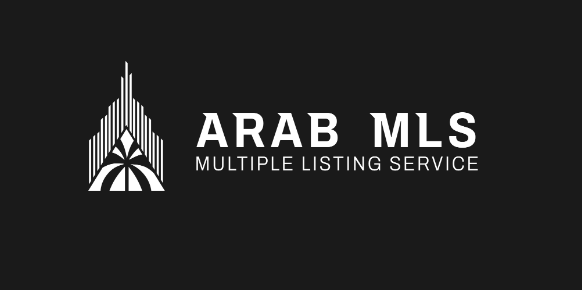The real estate industry is a dynamic field that demands up-to-date knowledge, strong technical skills, and an ability to leverage modern tools effectively. One of the most essential tools in any real estate agent’s arsenal is the Multiple Listing Service (MLS). As a centralized database of property listings, the MLS is crucial for accessing and sharing property information, collaborating with other agents, and ultimately closing deals.
For new agents stepping into this complex ecosystem, mastering the MLS is not just helpful—it’s essential. Therefore, providing structured and accessible MLS training sessions is a foundational step for brokerages, associations, and real estate schools aiming to set their new agents up for success.
Why MLS Training Is Crucial for New Agents
Core to Daily Operations
The MLS is used daily by real estate professionals. It allows agents to:
-
Search active listings and analyze market trends.
-
Upload and manage their own listings.
-
Access data such as sold property histories, tax records, and pricing analytics.
New agents who lack MLS proficiency can face significant delays and errors, impacting their performance and credibility.
Enhancing Client Service
Clients expect fast, accurate information and expert advice. Agents who are skilled with MLS tools can better match clients with ideal properties, provide up-to-date market insights, and prepare accurate comparative market analyses (CMAs). Without MLS training, agents may struggle to deliver the level of service today’s clients demand.
Building Confidence and Professionalism
New agents often face steep learning curves. Structured MLS training boosts their confidence by giving them hands-on experience and a clearer understanding of how to manage listings, set up property alerts, and use filters effectively. This translates into a more professional image and a smoother client experience.
Key Components of an Effective MLS Training Program
To maximize impact, MLS training should be comprehensive, engaging, and tailored to new users. Below are the essential components:
Orientation and System Overview
Introduce the MLS system used in your region. Walk through its dashboard, features, and primary functions. Provide a glossary of common MLS terms such as DOM (Days on Market), IDX (Internet Data Exchange), and status codes.
Listing Management Training
Teach agents how to:
-
Enter new listings.
-
Edit and update listing details.
-
Upload photos and documents.
-
Comply with listing rules and regulations.
This is a critical area where accuracy is vital—mistakes can lead to compliance issues and lost sales.
Property Search Techniques
Show agents how to perform advanced property searches using filters such as price, location, square footage, year built, school districts, and more. Demonstrate how to use map-based tools, saved searches, and automated email alerts for clients.
Comparative Market Analysis (CMA)
Train agents to generate CMAs using MLS tools. This includes selecting comps, adjusting for property differences, and interpreting pricing trends to help clients make informed decisions.
Client Management Features
Modern MLS platforms often integrate client portals, email communication, and collaboration tools. Help agents learn how to invite clients, share listings, and set up automatic notifications.
Mobile MLS Use
With many agents working in the field, it’s important to show them how to use MLS apps or mobile versions effectively. Highlight key features they can access on-the-go, such as route planning or client updates.
Best Practices for Delivering MLS Training
Hands-On Workshops
Learning by doing is far more effective than passive lectures. Provide real scenarios where agents can practice entering a listing, conducting a search, or preparing a CMA.
Small Group or One-on-One Sessions
Smaller groups allow for more personalized instruction, questions, and direct feedback. Consider pairing new agents with experienced mentors during initial sessions.
Recorded Tutorials and Documentation
Supplement live training with videos, guides, and FAQs that agents can refer back to. This is especially helpful for agents who prefer self-paced learning or need refreshers later on.
Continuous Education Opportunities
Technology evolves, and so do MLS platforms. Offer refresher courses and advanced training sessions to help agents stay updated on new features, integrations, or regulatory changes.
Encourage Certification
Some MLS providers offer certification or proficiency badges. Encourage new agents to complete these programs as part of their onboarding. It adds to their credibility and motivates deeper learning.
Common Pitfalls to Avoid
-
Overloading with Information: Avoid trying to cover too much in one session. Break training into digestible modules.
-
Assuming Prior Knowledge: Never assume a new agent understands basic real estate or tech terminology. Start from zero.
-
Lack of Real-World Application: Always relate features to real tasks agents will perform, such as setting up a buyer’s property search or evaluating a listing’s market position.
Measuring the Impact of MLS Training
To ensure your training program is effective, track metrics such as:
-
Agent satisfaction scores post-training.
-
Reduced listing errors and compliance violations.
-
Improved listing turnaround times.
-
Increased agent activity on the MLS platform.
Consider periodic surveys or interviews with new agents to get qualitative feedback and adjust the training accordingly.
Conclusion
Providing MLS training sessions for new agents is more than a box to check during onboarding—it’s a critical investment in their success. By equipping agents with the knowledge and skills to navigate the MLS confidently, brokerages empower them to serve clients better, avoid costly mistakes, and accelerate their growth in a competitive field.
A well-designed MLS training program blends practical knowledge, hands-on experience, and ongoing support. For new agents, it can be the difference between feeling overwhelmed and feeling empowered from day one.
Frequently Asked Questions
What does MLS stand for, and why is it important in real estate?
MLS stands for Multiple Listing Service. It is a database that allows real estate agents and brokers to share information about properties for sale.
Importance:
-
Promotes cooperation between agents and brokers.
-
Provides access to accurate, up-to-date property listings.
-
Enhances market transparency for buyers and sellers.
-
Enables agents to generate CMAs, analyze market trends, and match clients to suitable properties.
How do you enter a new listing into the MLS, and what are the key fields that must be completed?
To enter a listing:
-
Log into the MLS platform.
-
Navigate to “Add New Listing”.
-
Select the correct property type (e.g., residential, commercial).
-
Enter key fields including:
-
Address and parcel number
-
List price
-
Property type and sub-type
-
Square footage, number of beds/baths
-
Listing agent info
-
MLS status (e.g., Active, Coming Soon)
-
Photos and virtual tours if applicable
-
Tip: Incomplete or incorrect data can result in MLS violations and reduced listing visibility.
What is a Comparative Market Analysis (CMA), and how is it generated using the MLS?
A Comparative Market Analysis (CMA) is a report used to determine a property’s value based on recent sales of similar homes in the area.
To generate a CMA in the MLS:
-
Choose “CMA” or “Create CMA” from the dashboard.
-
Enter the subject property’s details (location, size, features).
-
Select comparable properties (ideally 3-5) that:
-
Are within the same neighborhood or school district
-
Have sold recently (usually within 6 months)
-
Are similar in age, size, and condition
-
-
Adjust for differences (e.g., one home has a pool, the other doesn’t).
-
Generate the report and review pricing recommendations.
CMA Purpose: Helps sellers price their home competitively and guides buyers in making informed offers.
What are the differences between “Active,” “Pending,” “Closed,” and “Withdrawn” MLS statuses?
-
Active: Property is available for sale and accepting offers.
-
Pending: Offer has been accepted; contract in progress but not yet closed.
-
Closed: Sale is complete and ownership has transferred.
-
Withdrawn: Listing has been removed from the market temporarily but may return.
Why it matters:
Knowing these statuses helps agents filter search results correctly, avoid showing unavailable properties, and track market activity accurately.













